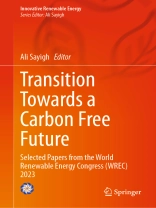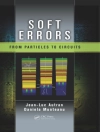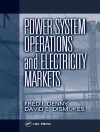This book contains selected papers from the 22nd World Renewable Energy Congress (WREC 2023) in Kuala Lumpur. The forum promotes renewable energy global development and features top international experts, policymakers, scientists, engineers, technology developers, and business practitioners addressing the most current research in sustainable energy development and innovation. The contributions address policy, technology, and applications across a wide range of topics, including solar thermal, geothermal energy, wind energy, turbines and generators, bioclimatic architecture, energy audits, construction and design, low carbon mobility, green steel, batteries and supercapacitors, regulatory issues and public policy, circular economy, urban mining and much more.
Inhaltsverzeichnis
Chapter 1. GENDER PAY-GAP IN THE NIGERIAN RENEWABLE ENERGY SECTOR.- Chapter 2. THE VIABILITY OF ECO PAVERS FROM PLASTIC WASTE IN ABUJA, NIGERIA.- Chapter 3. Photoconductive Cells Based on Type-II Conical Quantum Dots for Thermo-Photovoltaic and Other Mid-Infrared Applications.- Chapter 4. 100% Renewable Energy: A Stand-alone Hybrid Solar PV -Hydrogen-Battery Power Systems for Homeland Communities in Regional Western Australia.- Chapter 5. Amazing Photovoltaics:From Research Curiosity to Technology Realit.- Chapter 6. The compatibility of water/Core-shell Ag-Si O2 nanofluid as a spectral splitting optical filtration fluid to six types of photovoltaic solar cells under concentrated solar conditions.- Chapter 7. Reflective analysis of a volunteer-installed off-grid PV system for a remote Peruvian community centre.- Chapter 8. Renewable Energy as a Factor of the Sustainable Development of Society.- Chapter 9. The Influence of Dust on Photovoltaic Performance: Past, Present, and Future Perspectives.- Chapter 10. Ti O2-Ce O2 ADMIXED PHOTOELECTRODE FOR OPTIMIZATION OF HYDROGEN PRODUCTION IN REGARD TO PHOTOELECTROCHEMICAL SOLAR CELL.- Chapter 11. Optimal heat recovery and electricity production from a proton exchange membrane fuel cell’s operation.- Chapter 12. The Impact of Natural Disaster on Renewable Energy: The role of Foreign Direct Investment and Infrastructure in Asia.- Chapter 13. Numerical modelling of a sedimentation tank for enhancing sediment removal in open loop Ground Source Heat Pump system of type Standing Column Well.- Chapter 14. Comparison of CLOT-Adjusted AHI-8/9 and FY-4A Solar Irradiance Products for Solar PV Power Output Forecasting Using LSTM.- Chapter 15. Case study analysis of improving environmental ethics using a collaboration toolkit.- Chapter 16. WIND ENERGY IN MOROCCO: TANGIER AND LAGOUIRA IN COMPARATIVE PERSPECTIVE.- Chapter 17. Renewable Energy for Climate Protection and Energy Security – Lessons learned from the European Green Deal and RE Power EU –.- Chapter 18. Energy-efficient design for care home buildings – a case study.- Chapter 19. Numerical Modeling of a Novel PVT Collector Incorporated with PCM and CFM as a Cooling Method Compared with the Conventional One.- Chapter 20. Optimal sizing techniques for hybrid photovoltaic systems using Artificial Neural Networks (ANN): A review paper.- Chapter 21. ENERGY TRANSITION: DYNAMICS AND PROSPECT.- Chapter 22. SOLAR AND WIND ENERGY WILL SUPPLY MORE THAN 50% OF WORLD ELECTRICITY BY 2030.- Chapter 23. Renewable energy sustainability in the top EU’s strong economy country.- Chapter 24. Assessing the sustainability of Spain’s renewable energy system.
Über den Autor
Dr. Ali Sayigh is Chairman and Founder of the World Renewable Energy Congress and Council, Director General of the World Renewable Energy Network (WREN), Chairman and Founder of the Arab Solar Energy Society, and Past Chairman of the UK Solar Energy Society. Dr. Sayigh was recently elected to chair the Iraqi Energy Institute, and he actively consults on renewable and sustainable energy issues for several international organizations, including UNESCO, ISESCO, UNDP, ESCWA, and UNIDO. Dr. Sayigh was Director of Solar Seminars at ICTP Trieste, Italy, from 1977 to 1995; Professor of Solar Energy at King Saud, Kuwait, and Reading Universities from 1969 to 1994; and Professor of Engineering at the University of Hertfordshire from 1994 to 2004. He was the founding expert in Renewable Energy at AOPEC. He is a Fellow of the Institute of Energy, a Fellow of the Institution of Electrical Engineers, and a Chartered Engineer. He has published more than 400 papers and has contributed to and edited more than 30 books. Dr. Sayigh has been Editor and Editor in Chief of several international journals, including Renewable Energy and the International Journal of Environmental Sciences and Technology, and Editor-in-Chief of the reference work Comprehensive Renewable Energy.












